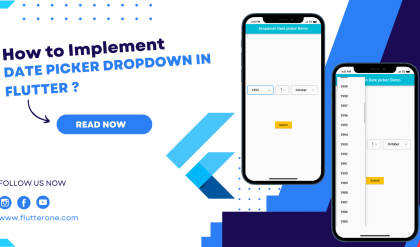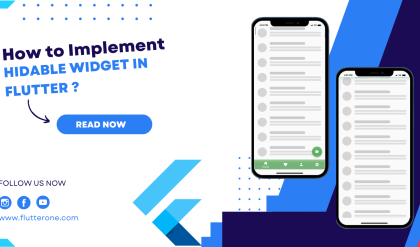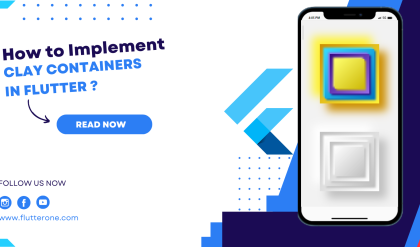Images play a crucial role in creating visually appealing and interactive mobile applications. In Flutter, the Image widget is used to display and handle images in various formats. In this article, we will explore the features of the Image widget and learn how to style and customize images in your Flutter app.
Getting Started
To begin, make sure you have Flutter installed and set up on your machine. Create a new Flutter project using the command line or your preferred integrated development environment (IDE).
Displaying Images
The Image widget in Flutter allows you to display images from various sources, such as local assets, network URLs, or memory. Here’s an example of how to display an image from a network URL:
Image.network(
'https://example.com/images/image.jpg',
);
In the above code snippet, the Image.network constructor is used to fetch and display an image from a given URL. You can replace the URL with the desired image URL.
Customizing Image Size
The Image widget provides properties to control the size and aspect ratio of the displayed image. You can specify the dimensions of the image using the width and height properties. Here’s an example:
Image.network(
'https://example.com/images/image.jpg',
width: 200,
height: 150,
);
In the above code, the image will be displayed with a width of 200 pixels and a height of 150 pixels. Adjust these values according to your app’s design requirements.
Styling Images
Flutter allows you to apply various styling options to images to enhance their appearance. Let’s explore some common styling techniques.
Rounded Images
To create rounded images, you can use the ClipRRect widget to clip the image within a rounded rectangle. Here’s an example:
ClipRRect(
borderRadius: BorderRadius.circular(10),
child: Image.network(
'https://example.com/images/image.jpg',
),
);
In the above code, the ClipRRect widget clips the image with a circular border radius of 10. Adjust the border radius value as per your design preference.
Adding Shadows
You can add shadows to images using the BoxDecoration property of a container that wraps the image. Here’s an example:
Container(
decoration: BoxDecoration(
boxShadow: [
BoxShadow(
color: Colors.grey,
blurRadius: 5.0,
offset: Offset(0, 2),
),
],
),
child: Image.network(
'https://example.com/images/image.jpg',
),
);
In the above code, the BoxDecoration adds a subtle shadow effect to the image. Customize the shadow color, blur radius, and offset values as per your desired style.
Image Cards
To create image cards with additional content, you can wrap the Image widget within a Card widget and add other widgets, such as text or buttons, as desired. Here’s an example:
Card(
child: Column(
children: [
Image.network(
'https://example.com/images/image.jpg',
),
ListTile(
title: Text('Image Title'),
subtitle: Text('Image Description'),
),
],
),
);
In the above code, the Card widget wraps the image and a ListTile widget to display the image title and description. Customize the content and layout within the Column as per your requirements.
Responsive Image Layouts
Flutter provides the LayoutBuilder widget to create responsive image layouts that adapt to the available screen space. Here’s an example:
LayoutBuilder(
builder: (context, constraints) {
return Card(
child: Container(
width: constraints.maxWidth,
height: constraints.maxHeight,
child: Image.network(
'https://example.com/images/image.jpg',
fit: BoxFit.cover,
),
),
);
},
);
In the above code, the LayoutBuilder widget allows you to access the available constraints of the parent widget. You can use the constraints to set the width and height of the Container, which wraps the image. The fit property ensures that the image covers the entire container area.
Conclusion
In this article, we explored the Image widget in Flutter and learned how to display and style images in your app. We covered various techniques such as customizing image size, creating rounded images, adding shadows, creating image cards, and building responsive image layouts. With these capabilities, you can enhance the visual appeal of your Flutter applications and create engaging user experiences.
Experiment with the provided code examples and incorporate them into your Flutter projects. Stay creative and explore the extensive capabilities of the Flutter framework to create stunning image-based interfaces in your apps.
Meta Title: Flutter Image Widget: Displaying and Styling Images in Your App Meta Description: Learn how to use the Image widget in Flutter to display and style images in your app. Explore techniques like customizing image size, creating rounded images, adding shadows, and building responsive image layouts. Enhance the visual appeal of your Flutter applications with these tips and examples.
I hope this article helps you understand how to use the Image widget in Flutter and provides useful code snippets for your projects.






